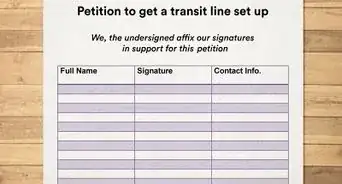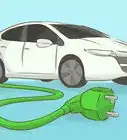This article was co-authored by Bess Ruff, MA. Bess Ruff is a Geography PhD student at Florida State University. She received her MA in Environmental Science and Management from the University of California, Santa Barbara in 2016. She has conducted survey work for marine spatial planning projects in the Caribbean and provided research support as a graduate fellow for the Sustainable Fisheries Group.
There are 10 references cited in this article, which can be found at the bottom of the page.
This article has been viewed 23,199 times.
The climate is changing, and the human race is finding that we must rethink many of the habits that we've taken for granted for generations.[1] Many societal changes will need to take place on a personal, day-to-day scale. Fortunately, "living green" can be an economical decision as well as an ecological decision. Set your intention, and make small steps. Learn to live in harmony with the earth!
Steps
Being a Conscious Consumer
-
1Reduce your consumption. Buy less and be conscious of where your money goes. Challenge yourself to only buy things that you need and that you will use. Before you make a purchase, ask yourself: "Do I need this? Will I use this?" Not all indulgences are bad – but a big part of living green is being aware of how your choices impact the world around you.[2]
-
2Avoid disposable packaging. Try to buy products that minimize plastic wrap. As a general rule: if a piece of plastic is flimsy and does not hold its shape, then it almost certainly cannot be recycled at your local center.[3]
- Buy food in bulk! Look for a local wholesale grocery store that features bulk food bins. You can purchase grains, flours, nuts, fruits, vegetables, and other staples by the pound, no plastic packaging necessary.
- Bring your own canvas bag when you go shopping. If you have the choice between "paper or plastic": choose paper. Use reusable baskets, bins, and cardboard boxes to carry bulk purchases.[4]
- Try storing food in jars or Tupperware containers. Wash out plastic bags and reuse them.
- Drink tap water, not bottled water! It is cheap, and it is safe.[5]
Advertisement -
3Favor sustainably-sourced products. When you do need to purchase goods, try to be a discerning consumer. Avoid spending your money on products that you know have been manufactured using unethical practices. Look for organic, free-range, humane, local products. Try to buy food that is in season, rather than food that has been frozen for months or shipped halfway around the globe to your local supermarket.
- Buy local, when possible. It takes a lot of money and fossil fuels to transport goods around the world. Supporting farmers and craftspeople in your area can be a great way to reduce your carbon footprint.[6]
- Buy recycled products, when possible. If you must buy paper and plastic, then buy recycled paper and recycled plastic products.
-
4Beware of chemicals. Read the labels on the products that you buy. Make sure that the chemicals hidden in these things will not leach into the environment during or after use, harming humans, animals, and ecosystems. Avoid industrial-strength cleaning products. Make sure to safely dispose of chemical products.[7]
-
5Reuse anything that you can. Find creative ways to reuse paper, styrofoam, old CDs and DVDs, empty water bottles – any consumer product that is not toxic or completely unusable after its intended single use. Try to break out of the self-perpetuating cycle of "use and dispose."
- Refill glass and plastic water bottles. Clean out food-packaging jars and use them for drinking or storage.
- Use rechargeable batteries. It's hard to safely dispose of traditional batteries, and they are not designed with reuse in mind. Rechargeable batteries can dramatically increase the time between battery purchases!
-
6Recycle what you can't reuse. Learn what you can and cannot recycle. In general, you can recycle all paper products, some metal products (aluminum, tin, steel,) some plastic products, and most glass.[8] Try to make it a practice, but be aware of the limitations.
- Every area is different, so make sure that you understand which municipal recycling options are available to you.
- Recyclable items need to be clean and free of food residue, especially paper products. If you have mixed material recycling, the residue on glass and aluminum can contaminate paper products.
Greening Your Home
-
1Favor green appliances. Make the more sustainable choice, where cost allows. You may not be able to switch out all of your household goods at once, but you can certainly begin to move in a greener direction. Set your intention and move gradually toward your goal.
- Switch out incandescent light bulbs for energy-saving bulbs. Try using dim lights at night. Install solar-powered lamps in your yard or garden to replace any traditional grid- or battery-powered lights.
- Buy low-energy appliances. Replace your dishwasher, your clothes washer, your drying machine, your refrigerator, etc. Find a version of each appliance that allows for a low electricity flow, or features a low-heat option, or even runs off the grid.
-
2Look into renewable energy sources. Consider putting solar panels on your roof. Some areas offer financial incentives for switching to solar, and you may find that the long-term savings are well worth the immediate cost of a switch. Consider going off-grid. Alternately, you can feed the extra power that you produce back into the wider power grid.
-
3Get rid of your lawn. If you live in an area that is not naturally lush and wet, then you are probably using a lot of water to keep that lawn looking fresh in your yard. The world is wracked with water shortages, particularly in dry regions and many developing nations. Try replanting the area with native vegetation that is not so water-intensive.
- Consider filling your yard with gravel, sand, or tanbark. Make a rock garden or build a patio!
-
4Rethink your heating and cooling solutions. Explore passive heating and cooling systems that utilize good airflow and thermal retention to keep your home at a comfortable temperature. Install programmable thermostats that switch off once your home temperature reaches a preset standard level. In the winter, wear layers and trap heat. In the summer, strip down and open the windows!
- Install insulation and double-glazed windows to minimize heat loss from your house. Detect heating loss using a thermal imager. Try to optimize the heat retention and airflow of your house so that the space requires as little electrical climate support as possible.
- Make sure that all of your windows open, and install openable windows to replace those that don't. Use fans to keep the air moving throughout your home.
- Install tankless water heaters. Depending on where you live, it may make sense to use geothermal or solar energy to heat your water.
-
5Compost at home. Build a compost heap or invest in a commercial composter. If your area doesn't have any sort of municipal composting infrastructure in place, then you can take the initiative to turn your organic food waste back into rich, healthy soil.
Changing Lifestyle Habits
-
1Reduce your carbon footprint. Your carbon footprint is the impact of your lifestyle on the earth's atmosphere (measured in tons of CO2 emissions). Become aware of the various "externalities" that lie beyond every choice you make. Think about the story behind your stuff: the various complex factors that have gone into the production, distribution, and sale of every single commercial product that you consume.[9]
- Remember that you don't need to bring your carbon footprint to absolutely zero to make a difference. Every little bit helps.
-
2Save electricity. There are a number of small steps that you can take to use less electricity in your everyday life. Turn off the lights when you leave a room. Unplug electronic items when they aren't in use, like countertop appliances (toasters, blenders, etc.), and phone and other device chargers.[10] Remember that electricity is a luxury.
- Open the windows. Use fresh air and sunlight for a free, natural source of cooling, heating, and light. Consider whether you truly need the lights and the A/C on during the day.
- Avoid leaving devices plugged in when you aren't using them. Turn your computer to sleep or hibernate mode when you don't need it on.
-
3Use less water. Don't let the tap run, keep showers short, and try to avoid unnecessary consumption. Practice the "if it's yellow, let it mellow" rule (meaning you only flush the toilet after defecating, not urinating). Generally aim to be conscious of how much water you are using.
- Collect rainwater for watering gardens and lawns. Install timers on sprinklers to limit water usage. Put in water-less urinals.
-
4Avoid burning fossil fuels for transportation. Try walking, bicycling, or taking public transportation. Carpool with friends, family, and coworkers, when possible. If you must own your own vehicle, then explore the possibility of hybrid-electric cars and scooters that allow you to burn less.
- Consider using Internet-based ride-sharing networks to match with strangers who are seeking or offering rides. Try https://rideshare.org/, Zimride.
- Adjust your expectations. Many methods of transportation are much slower and less convenient than driving a car. This does not mean that you cannot find value in them. Do your work or read a book on the train; look at your bicycle commute as a workout; use a carpool to connect with your coworkers outside of the office.
-
5Go paperless. The Internet has made it much easier to avoid using paper for everyday tasks. Challenge yourself to switch to digital solutions for your bills, receipts, and correspondence. Pay bills online and ask for digital receipts in shops.
- Communicate over the Internet. Use email, e-cards, and social media to keep in touch with people. Paper correspondence holds a certain nostalgia for many people, but it is not the greenest way.
- Change your newspaper and magazine subscriptions from print to electronic. This way, you can get all of the content with none of the waste.
Community Q&A
-
QuestionCan we live in harmony with the earth?
 RaddadprincessbouquetCommunity AnswerAbsolutely. It is almost impossible to be 100% green, but every step you take to be more environmentally friendly goes a long way.
RaddadprincessbouquetCommunity AnswerAbsolutely. It is almost impossible to be 100% green, but every step you take to be more environmentally friendly goes a long way. -
QuestionHow can I encourage people at work to stop using paper cups?
 Otterly BadgerificTop AnswererTry to stock the work kitchen with mugs and cups for them to use and ask people to use these instead of paper cups. You could also give away reusable water bottles to staff with the company's logo printed on them and encourage these to be used for drinking water at work. Don't supply paper cups at work for any purposes - always have glasses and mugs handy.
Otterly BadgerificTop AnswererTry to stock the work kitchen with mugs and cups for them to use and ask people to use these instead of paper cups. You could also give away reusable water bottles to staff with the company's logo printed on them and encourage these to be used for drinking water at work. Don't supply paper cups at work for any purposes - always have glasses and mugs handy. -
QuestionHow can I wrap gifts sustainably?
 Otterly BadgerificTop AnswererThere are various ways you can try. You can use fabric, such as a scarf or tea towel, that forms a part of the gift as well, tied with a ribbon that can be reused too. You could consider learning the Japanese gift wrapping art of furoshiki to wrap with a scarf, scrap fabric or other material. Reused wrapping paper or brown paper are another option, as are pages of unwanted magazines. Keep any wrapping you're given it, iron it under a towel on a low setting to remove wrinkles, then you'll have a handy supply whenever needed.
Otterly BadgerificTop AnswererThere are various ways you can try. You can use fabric, such as a scarf or tea towel, that forms a part of the gift as well, tied with a ribbon that can be reused too. You could consider learning the Japanese gift wrapping art of furoshiki to wrap with a scarf, scrap fabric or other material. Reused wrapping paper or brown paper are another option, as are pages of unwanted magazines. Keep any wrapping you're given it, iron it under a towel on a low setting to remove wrinkles, then you'll have a handy supply whenever needed.
References
- ↑ http://ar5-syr.ipcc.ch/
- ↑ http://www.puregreenmag.com/pure-green-blog/budget-friendly-green-living
- ↑ http://lausd-oehs.org/docs/Recycling/Non_Recyclable_List.pdf
- ↑ http://kids.niehs.nih.gov/explore/reduce/
- ↑ http://news.nationalgeographic.com/news/2010/03/100310/why-tap-water-is-better/
- ↑ http://money.usnews.com/money/personal-finance/slideshows/10-ways-to-live-green-on-a-budget/3
- ↑ http://www.prevention.com/health/healthy-living/70-easy-ways-to-green-up-your-life/swap-out-your-hand-soap
- ↑ http://www.wm.com/thinkgreen/what-can-i-recycle.jsp
- ↑ http://storyofstuff.org/

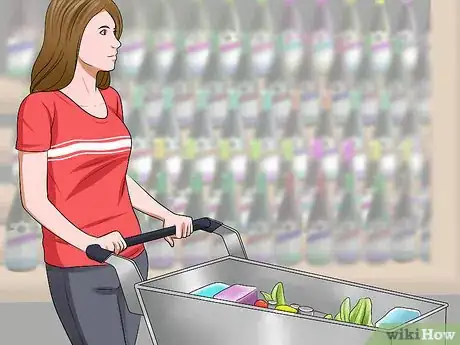
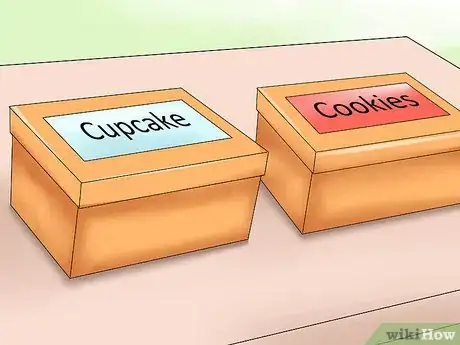
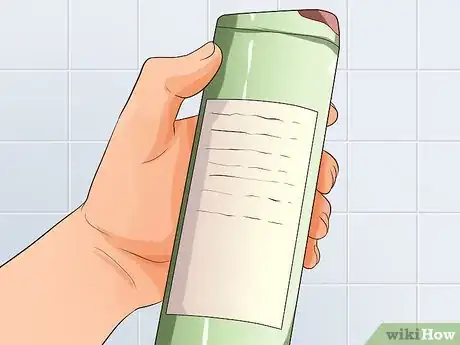
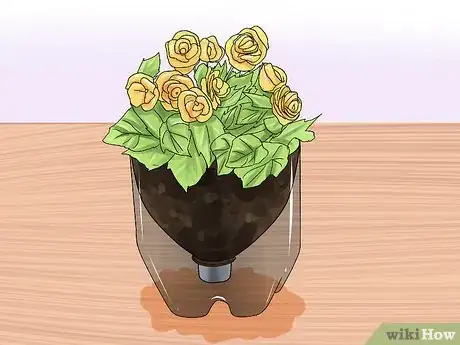
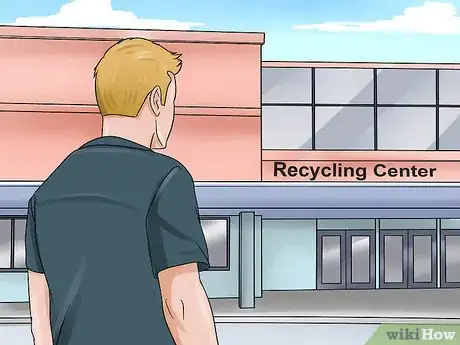



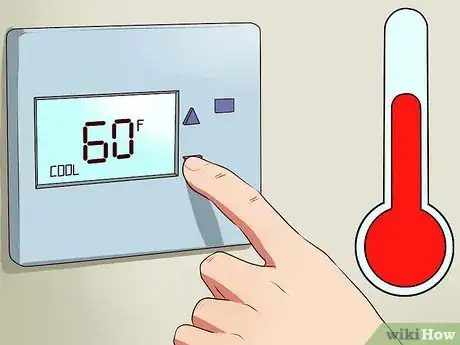
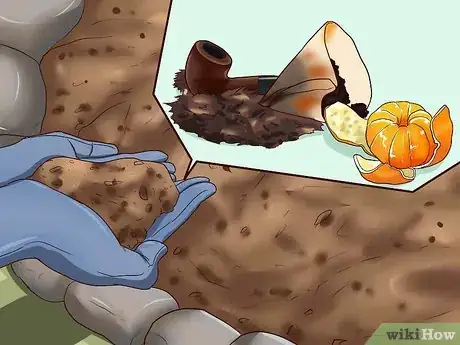

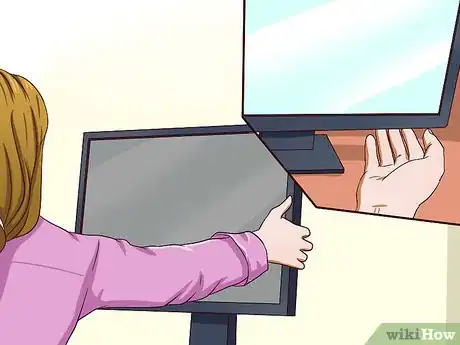
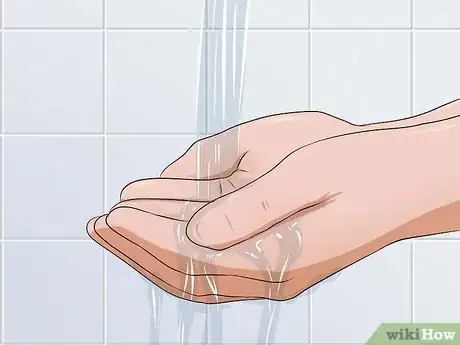


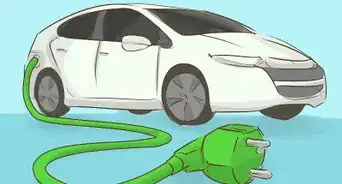


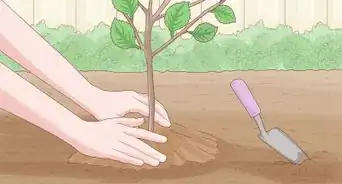

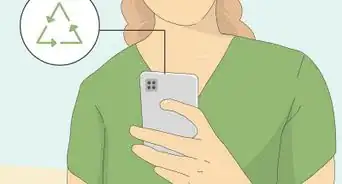

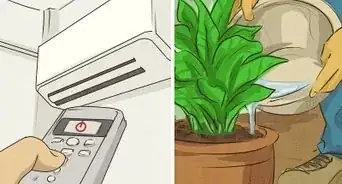

-Step-14-Version-6.webp)
